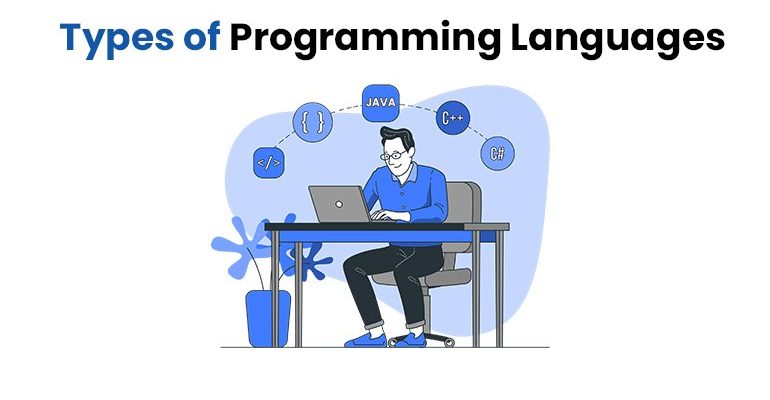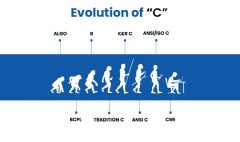Types of Programming languages
Types of Programming languages
Do you know about types of programming languages? Programming languages are a set of Instructions.
Programming Language helps to communicate instructions to a machine and control the specific behaviour of a machine. With the help of programming, we can make the Machine execute specific tasks as per the instructions.
There are two types of programming languages i.e.
1) Low-Level programing language
2) High-Level programming language
Let us see them in detail:
Low-Level programing language:
It consists of Assembly language and Machine Language. Let us understand them in brief.
Machine Language: This is an understandable computer language and not a human friendly one. It directly runs on the CPU. They are numeric, i.e. in a series of bits 0s and 1s, representing the instructions the computer can understand. They are not Portable, i.e. a machine language is specific to a particular type of Machine only. By the way, all languages need to be translated to Machine Langauge.
Assembly Language: On top of the Machine language, we have Assembly language. It eliminates much of the error which we may get while using Machine language. Codding in Assembly language is more accessible than Machine language as it replaces 0s and 1s with some instruction which is user friendly.
Example: It has instructions or commands like Move, Jump, Add, etc., which is easier to understand than Machine language.
| ADD C2,BH,CH |
| MOV B2,BB |
| JMP S10 |
Each assembly language is specific to specific computer architecture and also to Operating Systems. E.g., MIPS, NASM, x86, etc…
High-Level programing language :
Here comes now the high-level language. It is a Portable and Human-friendly language, i.e. in high-level languages, English Statements are used, which is easier to understand by Humans.
It consists of Procedural Language, Structural and Object-Oriented Language.
Procedural: The program is written as a sequence of Instructions, i.e. program executes statement by statement, reading and modifying shared memory. It executes a set of commands in order. These languages are based on the concept defined by the procedure calls. It means that statements are organized into procedures. These procedures are also known as functions. Since it’s written in step by step manner this it’s easy to follow smaller programs.
Example: COBOL, Pascal, Fortran
| Task () |
| Office Work |
| Studies |
| Exercise |
| Movies |
| Teaching |
Structural: It’s a programming style that aims to improve the Clarity, Quality, and Development time of Programs by using Block Structure.
It includes Top-Down Analysis, Modular Programming and Structured Code.
- Top-Down Analysis: It subdivides a program into smaller tasks for easing the problem solving process

- Modular Programming: It’s a programming designing style where a program is broken into smaller independent units called Modules
Main()
{
…
…
}
Module 1
{
…
…
}
Module 2
{
…
…
}
- Structured Coding: It aims at well organized code by using Control Transfer Statements and not GOTO.
Example: ALGOL, Pascal, Pl/I, C, Ada
Object-Oriented: Here, the program is written as an interaction of functions with Objects. Objects are capable of storing information, and they can also interact with other objects. It is the latest and powerful type of programming language used widely.
As seen from the above figures, in Procedural language, we follow a sequence of instructions. Suppose a person is a student and not going to the job, then instructions like OfficeWork will not be used by that person. So procedural language does not lead to reusable code functionality; suppose if we need to add some more tasks, then it may time consuming or much efforts require in Procedural language.
But in Object-Oriented, we have created Objects of Office, Studies, Exercise, etc. So here, there is an option to choose any Objects based on our needs, leading to code reusability. Also, not much effort is required to add or delete any tasks in Object-Oriented as in Procedural, we might need to modify the whole Task().
Example: C++, Java, C#, etc…
It was a brief introduction to the types of Programming Language; in other blogs, we will see Object-Oriented Programming Language in more detail.
So hope you understand about types of programming languages. For More Details, Click here.












